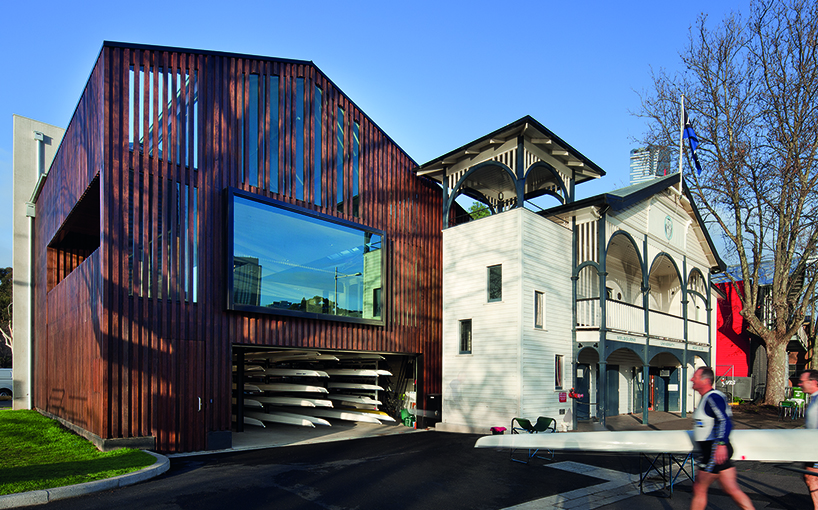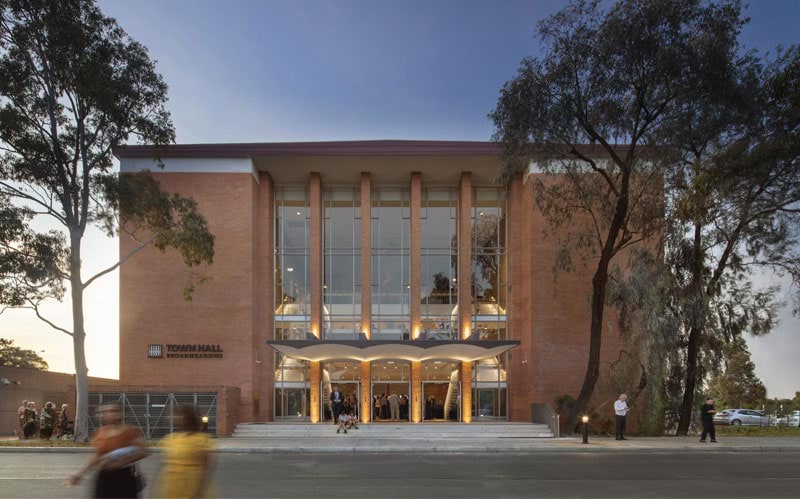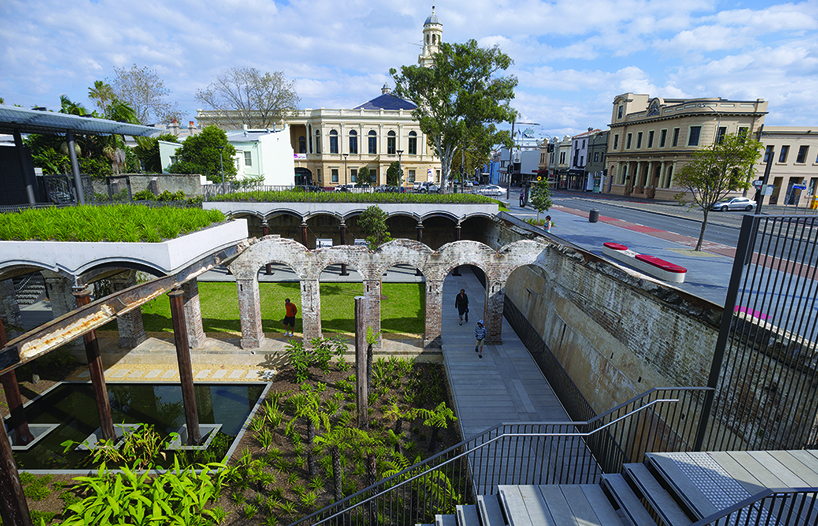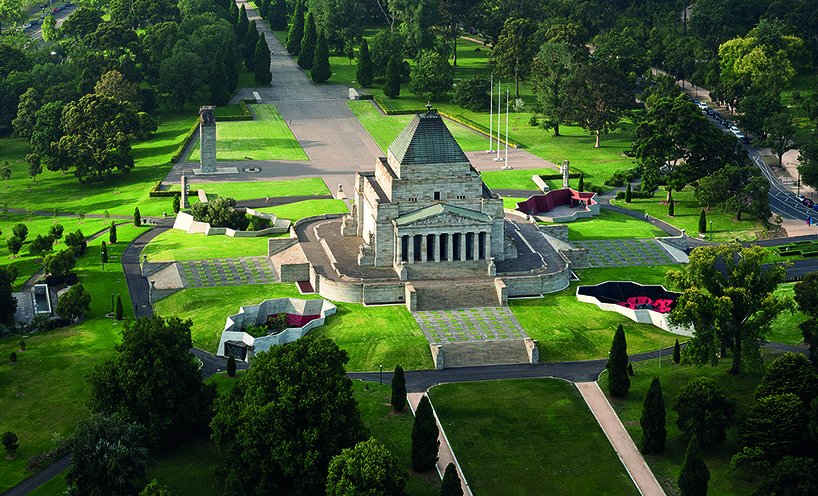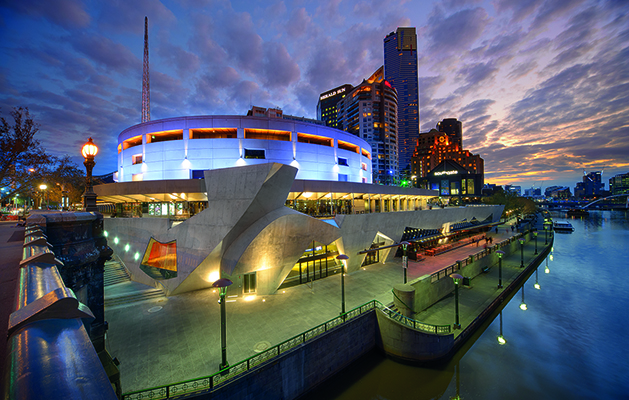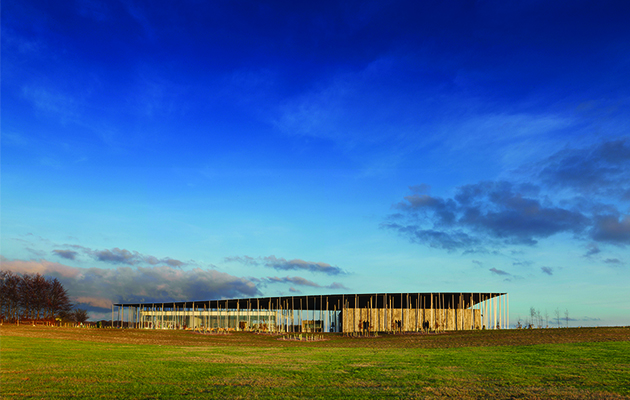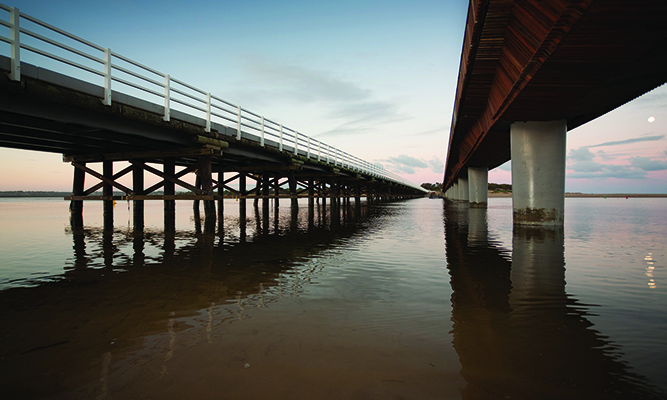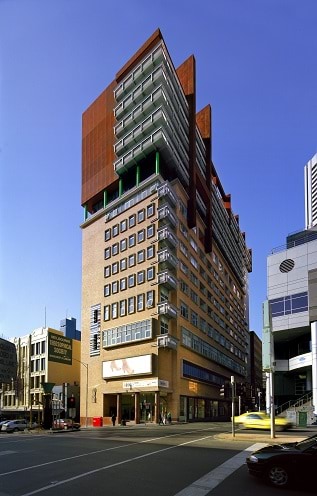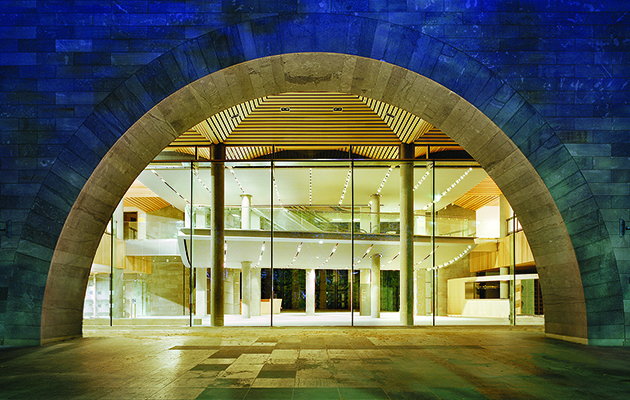You can download Good Design + Heritage here or find the full text below.
The Office of the Victorian Government Architect provides strategic advice to the government about architecture and urban design. We support government with advocacy and advisory initiatives, including design review, collaborative workshops, design quality teams, desktop reviews and input on briefs. One of our aims is to encourage awareness of the role of good design in protecting, enhancing and layering contemporary legacy in heritage places.
This publication is the seventh in a series that helps raise awareness of good design and promotes discussion about its benefits and value. The publication has been developed together with Heritage Victoria and the Heritage Council of Victoria. It highlights key design principles and outlines some effective approaches to achieving good design in places affected by heritage.
What is a heritage place?
The term heritage is often applied to places that have special cultural values; many of these places are described in lists maintained by state and local governments. A heritage place has recognised heritage values, is inherited from previous generations and contributes to the identity of people, communities and nations. In practical terms, our heritage is all that we value and want to keep for future generations. In making value-based decisions about what is worth conserving for future generations, heritage practitioners are involved in a filtering process. Heritage is far broader than the material objects that are preserved from the past. It includes the assumptions, ideas and attitudes that shape the way we relate to others and how we interact with the natural and built environments.
For a place or object to be included in the Victorian Heritage Register, it must meet at least one or more of the Heritage Council of Victoria's Criteria for Assessment:
- Criterion A Importance to the course, or pattern, of our cultural history.
- Criterion B Possession of uncommon, rare or endangered aspects of our cultural history.
- Criterion C Potential to yield information that will contribute to an understanding of our cultural history.
- Criterion D Importance in demonstrating the principal characteristics of a class of cultural places or objects.
- Criterion E Importance in exhibiting particular aesthetic characteristics.
- Criterion F Importance in demonstrating a high degree of creative or technical achievement at a particular period.
- Criterion G Strong or special association with a particular present-day community or cultural group for social, cultural or spiritual reasons.
- Criterion H Special association with the life or works of a person, or group of persons, of importance in our history.
The aim of heritage conservation is to ensure that the cultural significance of heritage items is maintained and valued over time. While changes may be necessary to adapt heritage buildings to new uses, it is important to ensure that these changes do not compromise the heritage significance of the place or its fabric. Heritage does not always mean ‘old’. For example, Victoria's post-war architecture is an intrinsic and visible part of our history and legacy for the future.
In Victoria, all three levels of government, federal, state and local, have different roles in identifying, managing and protecting heritage places and objects.
At a local government level, all municipalities in Victoria are covered by land use planning controls, which are prepared and administered by state and local government authorities. The legislation governing such controls is the Planning and Environment Act 1987. Heritage Overlays are one such planning control. Heritage Overlays include places of local heritage significance, as well as heritage precincts.
At state government level, the Victorian Government’s key cultural heritage legislation is the Victorian Heritage Act 2017, administered by Heritage Victoria. The Act protects and identifies heritage places and objects that are of significance to Victoria, as the Victorian Heritage Register (VHR).
Do as little as possible and as much as is necessary.
Melbourne University Boat Club (Year: 2012)
This project demonstrates the ability to respect the neighbouring scale of the Melbourne University Boat Club (1909) acting as a ‘bookend’ to the row of boatsheds on the southern bank of the Yarra River. The new building is carefully considered and sensitive in siting, scale and setback. The addition is free-standing, with no structural connection to the existing building and from the outside, the three-storey steel-frame extension appears to be two storey, just like its neighbour. The building presents an enduring contribution to the public realm, while mastering a set of design objectives.
Broadmeadows Town Hall (Year: 2019)
Broadmeadows Town Hall demonstrates what can be achieved when outdated community buildings from the 1960s are adaptively reused, rather than replaced. Clever internal planning carefully considers each new element while the best of the existing fabric is respected and enhanced. The architecture confidently succeeds in providing flexibility and amenity for its new functions, which extend well beyond the original building use.
This project demonstrates the opportunity to re-purpose historical infrastructure through good design into an urban park. The raw industrial expression and Victorian era treefern garden is an example of inhabited ruins as public space. The re-designed Reservoir used a restricted pallet of three materials — steel, aluminium and concrete, to compliment the historic brick, cast iron and timber.
Paddington Reservoir Gardens (Year: 2006-2009)
This project demonstrates the opportunity to re-purpose historic infrastructure through good design into an urban park. The raw industrial expression and Victorian era treefern garden is an example of inhabited ruins as public space. The redesigned reservoir used a restricted pallet of three materials – steel, aluminium and concrete, to complement the historic brick, cast iron and timber.
The Shrine Galleries of Remembrance (Year: 2015)
The Shrine Galleries of Remembrance demonstrates the importance of the original conservation management plan in helping to protect the significance and symmetry of the original additions through new southern courtyards that activate the public building ‘in the round’. The design strategy is inventive and yet respectful of the Shrine’s enduring historical and symbolic functions.
Victoria has a built heritage that is diverse and dynamic, reflective of its rich cultural history.
Understanding the legacy of this heritage, appreciating its values and working sensitively and creatively with its form and fabric are the means to forging a sustainable future for our cities, landscapes and communities.
The Burra Charter – guiding heritage
The underlying philosophy of heritage conservation in Australia is expressed in the Australia International Council on Monuments and Sites (ICOMOS) Burra Charter and takes its name from Burra in South Australia where the Australian Charter was drafted. The Charter sets a standard of practice for people who provide advice, make decisions about or undertake works relating to places of cultural significance, including owners, managers and custodians. The Charter defines the basic principles and processes to be followed in the conservation of Australian heritage places.
It identifies three levels for repair of heritage fabric including:
- preservation – maintaining a place in its existing state and preventing further deterioration
- restoration – returning a place to a known earlier state by removing accretions or by reassembling existing elements without the introduction of new material
- reconstruction – returning a place to a known earlier state. This is distinguished from restoration by the introduction of new material.
Hamer Hall Redevelopment (Year: 2014 - original construction date 1982 by architect Sir Roy Grounds)
The restoration of Hamer Hall demonstrates the capacity to sensitively restore heritage listed 1982 interiors while also offering enhanced urban design outcomes. Through the insertion of a new terrace over the Riverbank Promenade and a civic stair from the Yarra River to St Kilda Road, the project rediscovered the historical interface with Princes Bridge. This skilfully resolved civic architecture respects the legacy of Sir Roy Grounds’ raw exterior and John Truscott’s plush interior.
Stonehenge Visitor Centre (Year: 2013)
The Visitor Centre at Stonehenge demonstrates the way that architecture can offer reversibility through minimal foundations and excavations into a site of ongoing archaeological significance. The aerofoil roof references the immediate hillside context supported by the 211 steel columns. This design uses external access as a strategy to protect the build quality and to deal with up to 6,000 visitors a day.
Heritage asset management
The Victorian Government is custodian of a significant collection of heritage places and objects. Successful asset management relies on regular audits to maintain, protect and plan for current and future costs associated with a heritage place or object.
A key tool for successful heritage management is the Conservation Management Plan (CMP). A CMP is the principal guiding document for the conservation and management of a heritage place. It is a tool that allows owners, managers and approval authorities to make sound decisions about heritage places. A CMP identifies and prioritises the heritage values of a place, the conservation policies to be applied to protect that significance in the face of change, and a strategy through which the policies will be put into action.
New work may be sympathetic if its siting, bulk, form, scale, character, colour, texture and material are similar to the existing fabric, but imitation should be avoided.
Enhancing heritage through good design
Each generation contributes to the constantly evolving historic environment in its own way. It is important to understand that good design will add value and that a well designed building and place will acknowledge, respond to, and make the most of a heritage site and its opportunities.
Good design is not only relevant to high-profile heritage buildings and public spaces. Considered design makes a valuable contribution to small and modest heritage fabric, and reimagines new opportunities. Good design associated with heritage places is not a question of style, taste or replication, but of expertise, quality and skill in delivery.
Contemporary architecture and innovative design is an important part of the contextual approach to heritage fabric because it adds to the existing diversity and layering of architectural styles through time. This layering, which can retain heritage fabric from successive periods, is a defining feature in Victoria’s heritage. Appreciation of heritage includes the diversity of eras and elements that make up the physical environment, including gardens, objects and precincts.
Works to places in the VHR require a heritage permit under the Heritage Act 2017. A planning permit under the Planning and Environment Act 1987 may also be required. These are considered separately, but a collaborative approach can work to support an integrated outcome. Heritage Victoria, the Office of the Victorian Government Architect, Department of Transport and Planning’s planning approvals team and the responsible authority can collaborate to navigate individual concerns, hold workshops, and provide joint feedback at pre-application stage.
The aim of the workshops is to encourage exemplary design outcomes at heritage places. Any design proposal at a heritage place needs to be guided by the cultural heritage significance of the place. An appropriate response include consideration of the setting and significant view lines as well as any historic associations between buildings, structures and landscape elements. Appropriate new built form will be respectful of the heritage place in terms of scale, location, design and materials.
Each generation contributes to the constantly evolving historic environment in its own way. To achieve this it is important to understand that good design adds value and that well-designed buildings and places make the most of heritage sites and their opportunities.
The value of good design can be recognised in heritage buildings, infrastructure and public spaces that:
- respect the rich cultural heritage we inherit and provide an ongoing legacy in the built environment that fosters community pride and prosperity
- respect Aboriginal culture in place
- are sustainable, efficient, adaptable
- provide healthy environments for users to ensure wellbeing and productivity
- are inclusive, accessible to all, and provide safe, equitable, walkable built environments of high visual and physical amenity
William Buckley Bridge, Barwon Heads (Year: 2012)
This project demonstrates how good design can ensure existing heritage infrastructure can be retained and new works sensitively added alongside to provide civic architecture that is fully considered and skilfully resolved. The new bridge responds to the 1927 timber bridge by repeating the rhythm of its piers at an increased span and incorporates a raised platform for fishing and views downstream towards the mouth of the Barwon River.
Heritage is a big part of what makes Victoria liveable and loved. It's where we live, work, and gather to enjoy events. Good design is important to ensure that these places continue to be relevant, used and appreciated.
Good design in a Heritage context
In shaping our built environment, we have a responsibility to past, present and future generations. Good design in a historic context links the past to the present and projects into the future by demonstrating understanding of, and responding to, the context of a place. Any new development affecting an established and valued setting, such as a conservation area, must be memorably representative of its own time. Infill buildings can successfully provide for contemporary demands within the context of the historic environment.
Existing heritage buildings or conservation areas are complemented by good contemporary design that respects historic character by adapting or contrasting without overwhelming heritage values. An exemplary infill building will complement the existing built form and leave a valuable, enhanced legacy for the future. Skilled consideration of scale, massing, setbacks and fine-grain streetscapes is critical when designing within a heritage context. An informed design response relies on understanding heritage values and assessing opportunities and constraints that arise from these.
Good design in a historic context responds through an informed analysis of significance, character and quality. A good design response will respect important relationships between a building, its neighbours and its setting. A good design response may also create new relationships. There will be understanding of existing street grain, past patterns of development, key views, scale, materials and building methods.
Good design will ensure existing fabric is judiciously protected, understanding that heritage significance relates to the building as a three-dimensional form. It is important to avoid extensive demolition that leads to façadism, where for example only the façade of a building is retained. Elements in addition to the façade are likely to contribute to heritage significance and these can be the catalyst for a successful contemporary concept. Careful consideration must also be given to the impact on the internal spatial quality and the relationship between the interior and the façade. Care also needs to be taken when retrofitting new uses into buildings where the introduction of services can be extensive and intrusive, for example retrofitting heritage buildings with residential apartments.
Hero Apartment Building (Year: 2001)
This adaptive reuse of the 1948 Melbourne Telephone Exchange and Post Office, demonstrates how a change of use can be successful integrated, with six storeys of apartments inserted above the roofline. The design is successful in referencing and reinterpreting ornamental elements of the existing Inter-war Functionalist style building, introducing a counterpoint to the existing cubic geometry in a modern vernacular finished in Corten steel and galvanized iron.
The best adaptive reuse does not dissociate the past but layers new uses and meanings on already valued places.
Urban renewal and adaptive reuse in industrial areas
The legibility of industrial precincts in urban settings offers excellent opportunities for place making, regeneration, sustainability, mixed use and a tangible connection to the past. A project in an industrial heritage environment can act as the catalyst for urban renewal and help to reinforce the natural grain and scale of the built form. It is a way to encourage distinctiveness in local areas.
Adaptation of industrial places to a new use is often the only option for heritage fabric when it is no longer considered viable. Through good design, remnant industrial places can be reinvigorated, interiors retained, and past equipment integrated. This may also include capturing the opportunities inherent in past infrastructure including rail trails, viaducts, mines, bridges or waterfront piers.
Environmental sustainability
Good design in a heritage place will capture the environmental sustainability opportunities in the building’s embodied energy (being the energy consumed by all of the processes associated with the original production of that building). Through a careful, considered approach, good design can ensure that reuse and recycling of building materials reduces the energy consumption associated with a new project. When sustainable design initiatives are incorporated into heritage buildings and additions, they enhance the whole-of-life performance.
Key steps - what to do
- Understand the heritage and cultural significance of the place.
- Engage heritage experts and allow sufficient time for research of existing heritage and cultural fabric and design supported by documents, including conservation management plans.
- Encourage exemplary design outcomes from highly capable architects.
- Ensure early and creative consultation between the architect, heritage advisor and the relevant statutory authority.
- Encourage design innovation in new additions to heritage places to help reduce long-term maintenance costs and environmental impacts.
- Be aware that the procurement strategy will affect the design and define processes to protect the heritage fabric, design intent and quality.
- Creatively incorporate existing building fabric which is heritage listed and of contributory character into new developments and recognise the benefits of embodied energy in existing materials.
- Respect the existing built form, streetscapes and urban design as well as the intangible values of the former natural landscape and potential cultural heritage.
- Consider the scale, form, materials, finishes and where possible functions of building elements in new developments.
- Ensure that the documentation for a heritage place is available and current. Develop a ‘live’ conservation management plan.
NGV (Year: 1968)
The National Gallery of Victoria built in 1968 demonstrates the enduring quality of good design with its large palazzo-like rectangular form, with three internal courtyards providing light and external views to surrounding galleries. Contextual materiality is expressed through the bluestone clad, reinforced concrete exterior, and the warmth of the internal timber and relieved by the large entrance archway, water-wall and bronze Victorian coat of arms.
Good design principles + value
Understand the wider context
Protection of the setting or landscape is equally as important as protecting the heritage place. This may include past development patterns, the protection of heritage vistas or Aboriginal cultural landscapes.
Involve community and users
A fit-for-purpose and contextual outcome that enhances the existing heritage place.
Retain and integrate cultural heritage
A demonstrated understanding of, and continuity with, the past.
Adopt an evidence-based approach
Where the reinstatement of a heritage place is historically informed (for example, conservation management plan) and respectful, based on plans, photographic or other physical evidence.
Identify the contributory elements
Informs an understanding of the extent of the heritage fabric. Will seek to avoid façadism. Contributory heritage elements may also form the reference point for new architectural outcomes.
Respect and enhance the heritage place
New additions are designed to integrate and complement the existing heritage fabric and scale on all elevations.
Create legibility
New works will be distinguishable from existing heritage fabric and do not imitate.
Seek expertise and skill in delivery
Specialist restoration and alteration of heritage fabric.
Facilitate urban Renewal
Reinvigorates redundant places and layers new uses through design, especially industrial places.
Create efficiency in structure and plan
Reduced building area, reduced use of resources, lower costs.
Consider the broader landscape
Understanding that the setting of a heritage item may contribute to the significance of the place.
Embed environmental sustainability
Protecting existing fabric retains embodied energy while environmentally sustainable design features enhance whole-of-life design.
Consider universal design
Designing an inclusive built environment while respecting the existing fabric.
Understanding and being sympathetic to heritage buildings, materials and settings does not prevent good modern architecture. In fact it demands it.
Updated

